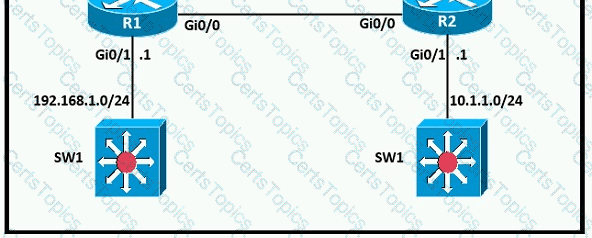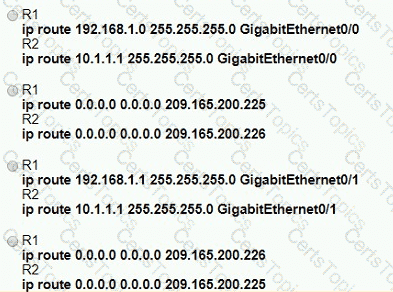
Refer to the exhibit. An engineer must add a subnet for a new office that will add 20 users to the network. Which IPv4 network and subnet mask combination does the engineer assign to minimize wasting addresses?
Which port type supports the spanning-tree portfast command without additional configuration?
What is the purpose of an SSID?
Refer to the exhibit.

A network engineer is in the process of establishing IP connectivity between two sites. Routers R1 and R2 are partially configured with IP addressing. Both routers have the ability to access devices on their respective LANs. Which command set configures the IP connectivity between devices located on both LANs in each site?
